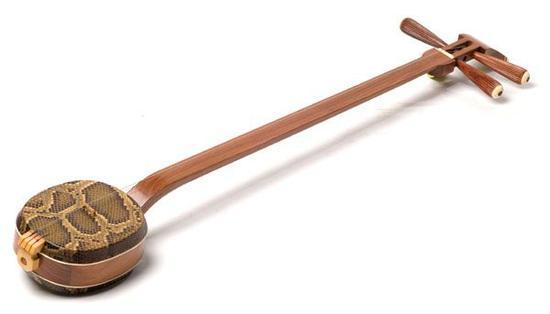The structure of the three-stringed piano
588 views · Organized by 赵锦辛 on 2022-03-03
Zhang Sangenxian, hence the name "Sanxian". Divided into head, neck and body. The neck is the fingerboard, which is relatively long. The body of the violin is covered with snakeskin on both sides. In the 1920s, the addition of the sanxian appeared, but it was not popular. The sanxian in the north is generally 122 cm long and is called "big sanxian", while the southern sanxian is generally 95 cm long and is called "small sanxian".

- The upper end of the headstock is in the shape of a hoe, or decorated with ivory pieces or bone pieces, with a string slot and a peg hole at the bottom, with 2 pegs on the left and 1 peg on the right.
- The neck is connected to the head and the body below. The upper end of the neck is a mountain mouth. The neck is almost entirely fretless. The fingerboard and the membrane are at the same level. The lower end of the neck is bent toward the back and connected to the body.
- The body of the violin, also known as the guqin drum, is slightly square, hollowed out from logs, or glued into a wooden frame with wood chips, and covered with snake skin on both sides.
- epithelium
Involving musical instruments
The sanxian has three strings in total, hence the name "Sanxian". Chinese traditional plucked instruments were also introduced to Ryukyu, Japan and other places. He plays the main instrument in operas such as Kunqu Opera, Huaihai Opera, Daxianzi Opera, etc.
Guess you like
Organized by 弥光 on 2022-03-03
The three-string playing method is to sit and play, place the body on the right thigh, hold the neck with the left hand and press the handle, and the body is at a 45-degree angle. According to the different sizes of the sanxian, usually the small sanxian is played with a plectrum, and the big sanxian is played with false nails.
read >>
 渝公网安备 50010702504639号
渝公网安备 50010702504639号